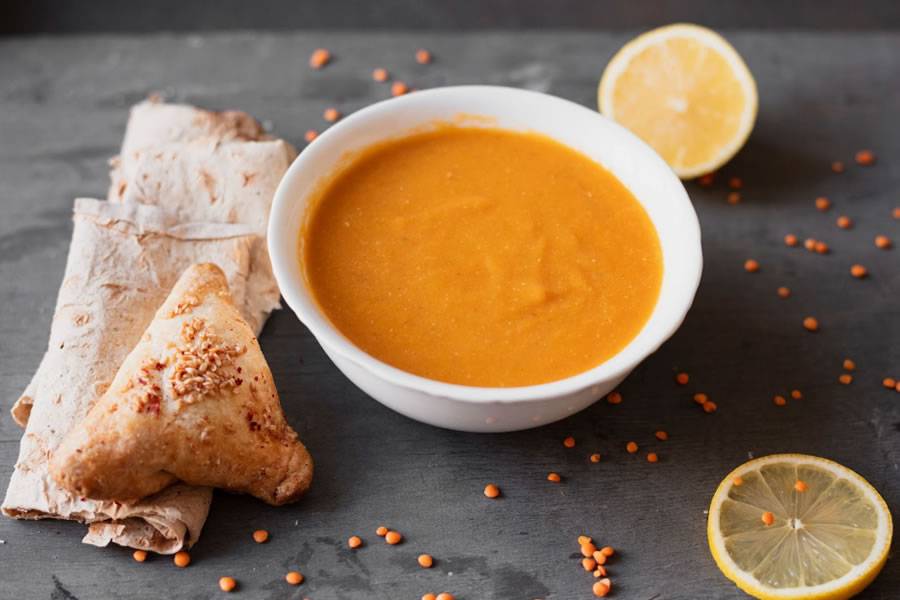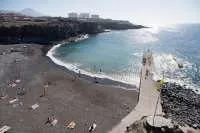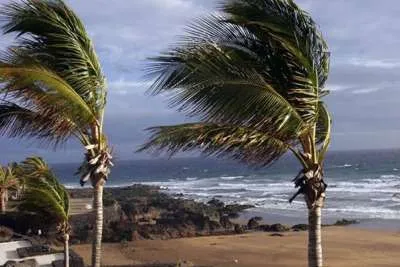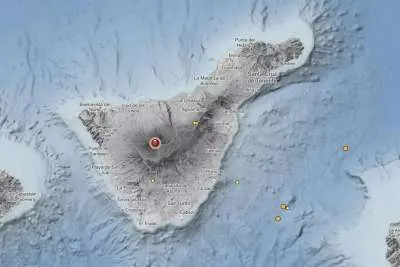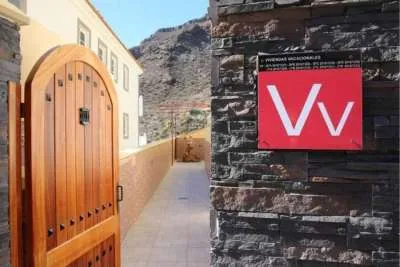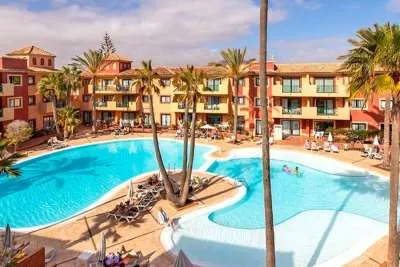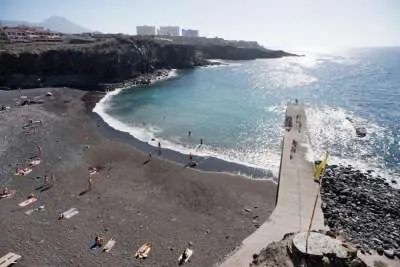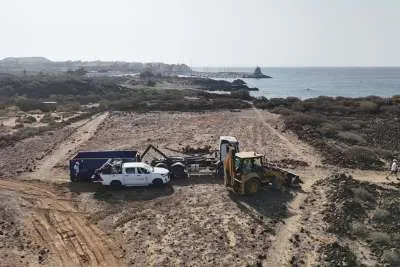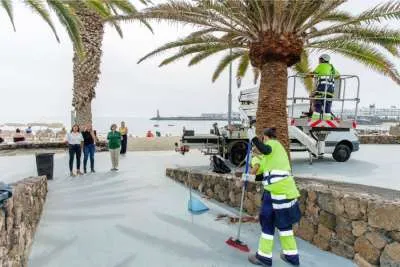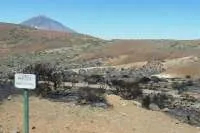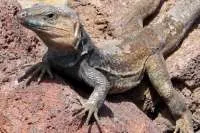Volcanoes & Mojo - The Canary Islands' authentic flavours and traditions
- 01-06-2024
- Travel
- Canarian Weekly
Rise from the ashes, they did! The Canary Islands were born from fiery eruptions millions of years ago, creating a captivating archipelago situated just off the coast of Morocco. Unlike most island chains, these boast a dramatic rise from the ocean floor, with some peaks piercing the clouds and holding the prestigious title of Spain's highest point.
But the Canary Islands aren't just about breathtaking views. Here, the volcanic spirit infuses everything, even the very soul of their cuisine. Enter "mojo," a vibrant sauce that isn't just a condiment; it's a cultural touchstone, bursting with flavour and reflecting the rich traditions of this remarkable island paradise.
Volcanic Influence On The Canary Islands
The Canary Islands' volcanic past is more than just a dramatic backstory; it's the foundation for the unique agricultural land. Volcanic eruptions leave behind a rich soil type known as volcanic ash. This is why these islands are rich and lively.
The Land and Agriculture
The Canary Islands' volcanic past has sculpted a land unlike any other. Volcanic ash and basaltic rock have weathered over millennia, resulting in a unique type of soil known as "tierra volcánica" (volcanic earth).
This soil might seem harsh at first glance, but it holds a surprising secret: fertility. Volcanic ash is rich in essential minerals like phosphorus, potassium, and iron, providing crops with the perfect foundation to thrive. However, this soil also comes with a twist – it's naturally well-draining.
This might sound like a disadvantage, but for Canarian agriculture, it's a blessing in disguise.
The volcanic soil's drainage prevents waterlogging, forcing plants to work harder to access moisture. This "stress" on the plants actually intensifies their flavours. Vegetables grown in volcanic soil tend to be more concentrated in sugars and minerals, resulting in a deeper, richer taste.
For example, biting into a tomato bursting with sweetness or savouring a vine-ripened grape with a burst of tangy acidity – that's the magic of volcanic earth at work.
Signature Dishes - Papas Arrugadas
Nowhere is this volcanic influence more evident than in the iconic Canarian dish, "papas arrugadas" (wrinkled potatoes). These small, new potatoes are a staple in every Canarian household and a must-try for any visitor.
But what makes these potatoes so special? It all boils down to the volcanic soil and a unique cooking method.
Papas arrugadas are simply cooked in a large pot of heavily salted water, often seawater, straight from the Atlantic. The high mineral content in the water combined with the volcanic soil creates a natural brine that seasons the potatoes from the inside out.
The key lies in keeping the skins on – they act as a barrier, allowing the potatoes to cook through while retaining their moisture and concentrating their flavour. As the water evaporates, the intense heat causes the skin to wrinkle, giving these potatoes their signature look.
The final product? Perfectly tender on the inside and delightfully crispy on the outside, papas arrugadas are typically served with a generous helping of mojo sauce, another testament to the volcanic influence on Canarian cuisine.
What Is The Allure Of The Mojo?
Mojo is the heart and soul of Canarian cuisine. It's not just a sauce. It's a flavour explosion waiting to be unleashed on your taste buds. This vibrant sauce comes in two main variations: "mojo rojo" (red mojo) and "mojo verde" (green mojo).
Rojo packs a fiery punch. Its vibrant red colour comes from roasted red peppers (pimientos rojos) or smoked paprika (pimentón), sometimes even featuring a kick of chili peppers. The base typically includes olive oil, garlic, cumin, and vinegar, creating a smoky, savoury, and slightly spicy flavour profile.
Verde offers a refreshing counterpoint. Its emerald green hue comes from a blend of fresh herbs like coriander (cilantro) or parsley, along with jalapenos or green peppers for a milder heat.
Garlic, olive oil, and citrus juices (lemon, lime, or even the more traditional sour orange) complete the base, resulting in a bright, tangy, and slightly herbaceous sauce.
The Mouthwatering Ingredients and Flavours
The magic of mojo lies in its seemingly simple ingredients. Fresh, high-quality products are key. Garlic, the ubiquitous base, adds a pungent bite that lingers pleasantly. Olive oil provides a smooth, rich body.
Spices like cumin and paprika add warmth and smokiness to mojo rojo, while fresh herbs lend a vibrant freshness to mojo verde. The use of citrus juices and vinegar adds a touch of acidity that cuts through the richness and balances the flavours beautifully.
However, the true secret weapon of mojo is the interplay between these ingredients. Each element enhances the others, creating a complex and nuanced flavour profile that's both bold and refreshing.
A good mojo is a harmonious symphony of savoury, spicy, tangy, and herbal notes, leaving you wanting more with every bite.
The Versatility of Mojo
Mojo's beauty lies in its versatility. It's a condiment chameleon, adapting to its role like a seasoned performer. Drizzle it over papas arrugadas for the quintessential Canarian experience.
Drench-grilled meats and seafood in its vibrant flavours for an extra kick. Use it as a dipping sauce for fresh vegetables, crusty bread, or even fried plantains.
But Mojo's talents extend beyond the plate. It's also a fantastic marinade, infusing meats and fish with its aromatic magic. Imagine succulent chicken or tender fish infused with the smoky warmth of mojo rojo or the bright, citrusy notes of mojo verde. The possibilities are endless, making mojo a staple in every Canarian kitchen.
In fact, all these ingredients come at a very reasonable price, and even people holding cryptocurrencies can use bots like Ethereum Code to pay for these ingredients in the Canary Islands.
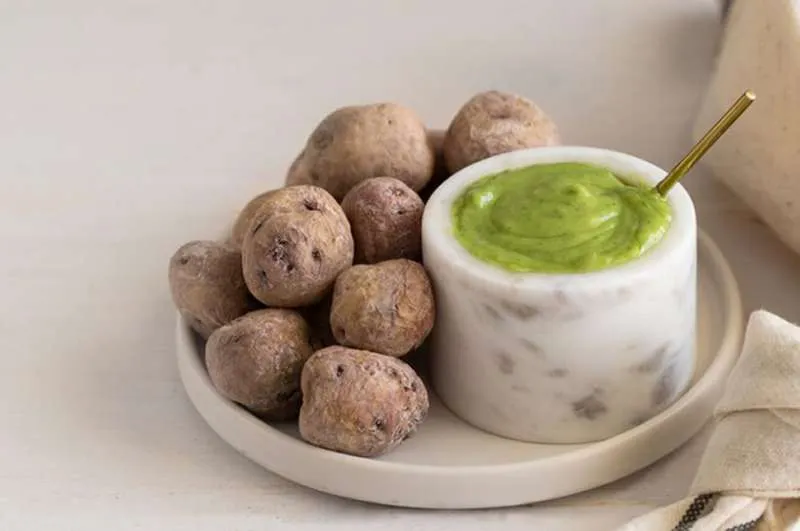
The Mojo And The Tradition
Canarian cuisine is a vibrant tapestry woven from the threads of history. The archipelago's strategic location, nestled between Europe and Africa, has made it a crossroads of cultures for centuries.
Early European settlers, primarily Spanish, brought their love for olive oil and vinegar, forming the base for mojo sauces. Influences from Africa, particularly the use of spices like cumin, add a touch of warmth and depth. The arrival of explorers from the Americas introduced ingredients like tomatoes and chili peppers, which found their way into mojo rojo for a fiery twist.
Mojo is a cultural touchstone that reflects the rich heritage and traditions of the Canary Islands. Its simplicity speaks to the resourcefulness of the islanders, who used readily available ingredients to create a flavour sensation. The use of volcanic elements, like the seawater used to boil papas arrugadas, further deepens the connection to the land.
Final Thoughts
So, the next time you crave an adventure, consider a culinary journey to the Canary Islands. Beyond the breathtaking beaches and volcanic wonders, there awaits a world of flavour waiting to be discovered. Dive into a plate of papas arrugadas drenched in the fiery embrace of mojo rojo, or savour the refreshing tang of mojo verde with fresh seafood. With every bite, you'll taste the spirit of the Canary Islands, a place where volcanic passion ignites a love for good food and warm hospitality.
Other articles that may interest you...
Trending
Most Read Articles
Featured Videos
A Vision of Elvis Tenerife Promo
- 10-05-2025
Tenerife Travel Guide
- 13-12-2024
Live webcam from Lanzarote airport
- 13-12-2024


